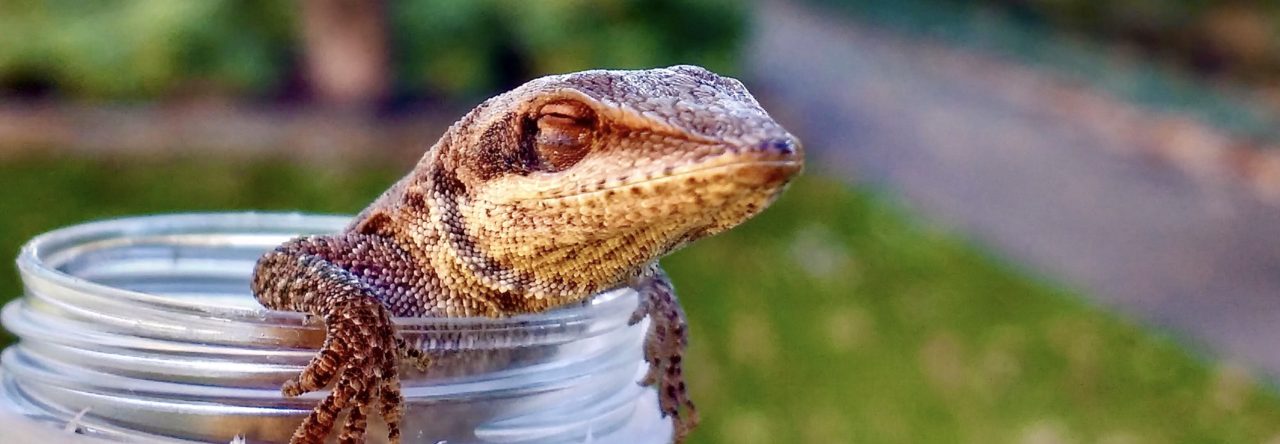
The Caribbean skink radiation. Islands identified by name have (or had) mabuyine skinks; others--notably Cuba--do (or did) not.
Think Caribbean lizard diversity and you think of anoles, dwarf geckos, perhaps curly tailed lizards and whiptails. But skinks don’t generally come to mind. Heck, I almost never see skinks in the Caribbean and, anyway, their diversity is very low, with only six Caribbean species.
Until now. In a recently published monograph, Hedges and Conn have scrutinized the genus Mabuya, using both molecular and morphological characters, and have more than doubled the number of species, from 26 to 61, which they have broken into 16 genera (and, as a sidenote, they also split the family Scincidae into seven families). That so many species went undetected is perhaps not surprising, in that Mabuya, like most skinks, all look alike, with very few characters available to distinguish them. Moreover, a trend of species lumping has occurred historically, obscuring sometimes great differences among taxa, as illustrated in the photo to the left.
Of the 61 species, 39—in six genera—occur on Caribbean islands. Most occur on a single island, and most islands only have one species, though as many as three occur on Hispaniola and St. Thomas, and two on a number of islands. Oddly, Cuba has none. Like anoles, to which they no doubt aspire, sympatric skinks differ in body size and ecology, with three ecomorphs described; terrestrial, scansorial and cryptozoic (though for many species, assignation is based solely on morphology; for discussion of the ecomorph concept, read here).
Unlike anoles, the story of mabuyine diversification is mostly one of colonization, rather than in situ diversification. The six Caribbean genera are each the result of a separate dispersal from South America (and check out the photo to the left of a floating mat of vegetation, indicating how such dispersal might occur). Multi-species islands are occupied by members of different genera. In other words: no within-island speciation has occurred; new species arise by colonization of an island, followed by divergence.
Sadly, the conservation status of all species is bleak. The reason I see so few skinks is that there are very few to see. Sixteen of 38 Caribbean species are apparently extinct, 11 more are critically endangered and the rest are in trouble. Man is the cause, particularly by unleashing mongooses on many islands—islands lacking mongooses have much healthier populations.
The last two paragraphs of the paper provide a nice encapsulation:
“We did not expect to find a new skink fauna when we started this study. Only a single, wide-ranging species was recognized on most Caribbean islands for much of the last century. Now, the composition of the West Indian lizard fauna has changed, with skinks moving from one of the smallest to one of the largest groups of lizards in the West Indies. The 38 endemic species recognized here include a range of body shapes and sizes, and apparently different lifestyles. Some islands in both the Greater and Lesser Antilles have (or had) sympatric species. The discovery of this amount of diversity in a region as well-studied as the Caribbean was a surprise. This revision will also provide future researchers with a systematic framework to explore ecological, evolutionary, and biogeographic questions on Caribbean skinks that otherwise would not have been possible to ask. For example, some of the topics that might be investigated include adaptive radiation, character displacement, competition, convergence, reproductive cycles, and speciation.
Sadly, all of the 38 endemic species of skinks on Caribbean islands are threatened with extinction, and 16 species may already be extinct. This highlights, once again, the importance of systematics for conservation (Wilson 2004). For example, under the previous taxonomic scheme involving one or two wide-ranging species, it was nearly impossible for a species to become extinct unless skinks were to disappear from all islands. As a result, neither of the wide-ranging “species,” Mabuya mabouya (sensu lato) and Mabuya sloanii (sensu lato) has been considered to be threatened. At the same time, sixteen species quietly disappeared, most from mongoose predation, with essentially no response or conservation action. An incorrect taxonomy has kept this entire skink fauna effectively off the conservation radar, inhibiting funding for such things as eradication of introduced predators, habitat protection, and captive breeding, as well as ecological and evolutionary study. We hope that this work will correct this error and draw attention to these fascinating animals that have evolved and adapted over millions of years on islands of the Caribbean.”
- Third Mexican Amber Anolis Lizard Discovered - January 14, 2025
- Anolis Lizard Research Paves the Way for Advances in Treatment of Human Prostate Cancer - January 10, 2025
- When Two Lizards Meet for the First Time, Scientists Witness Evolution in Action - January 3, 2025




Armando Pou
This is fascinating stuff Jonathon!!
I left when very, very, young, but I thought there was a skink species in Cuba. They (whatever they were) had very reduced legs and were a uniform copperish color. Perhaps the absence of skinks in Cuba has something to do with the ameivas and similar species?
James Lazell
The Conservation Agency is proud to have contributed to furthering this work through a grant from Falconwood Foundation. After 55 years of herping the Antilles, I was utterly amazed by this! The loss of so many of these “slipperybacks” is truly tragic!
Hank
St. Thomas Skink
Jonathan Losos
That’s an Ameiva.